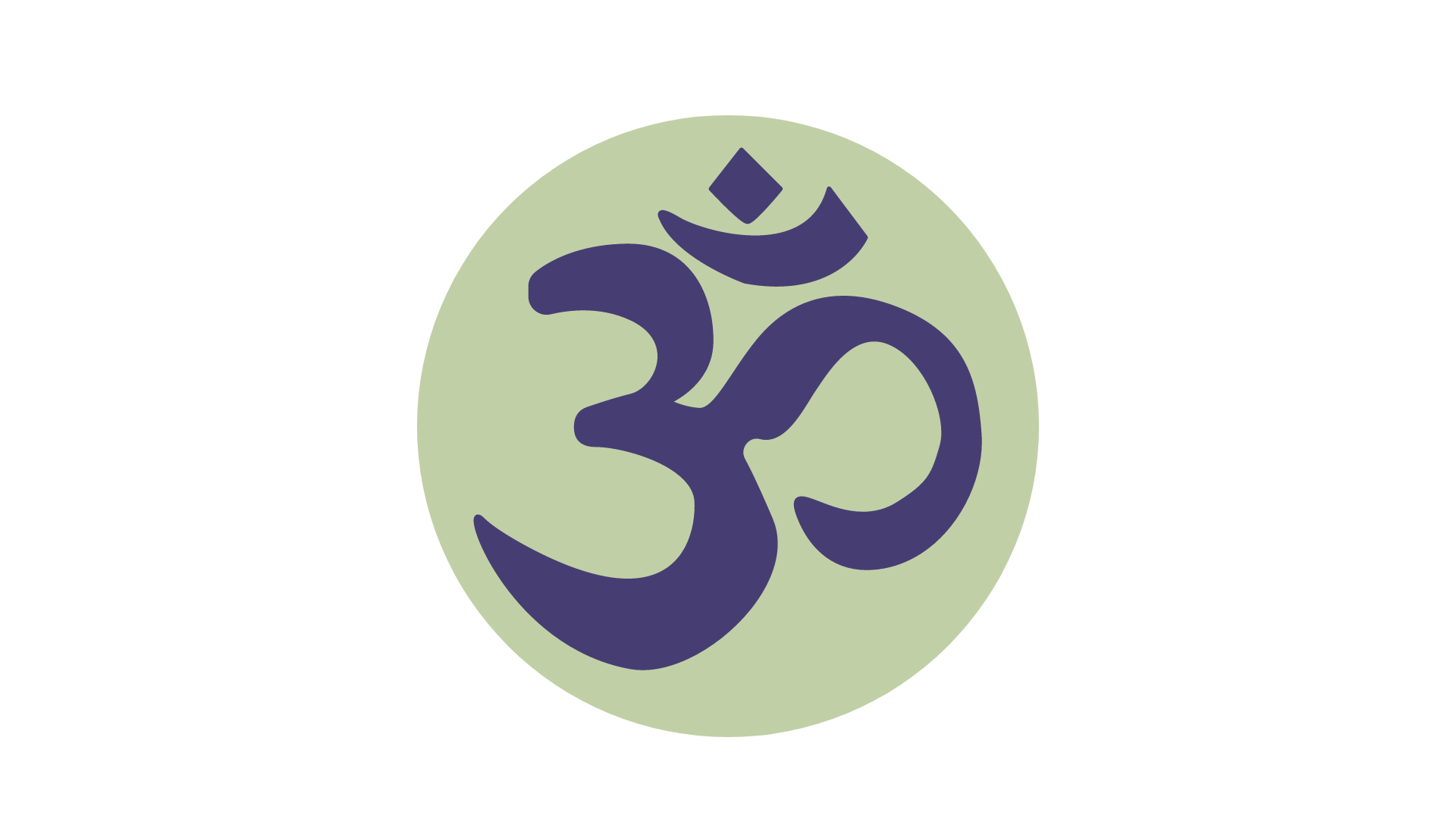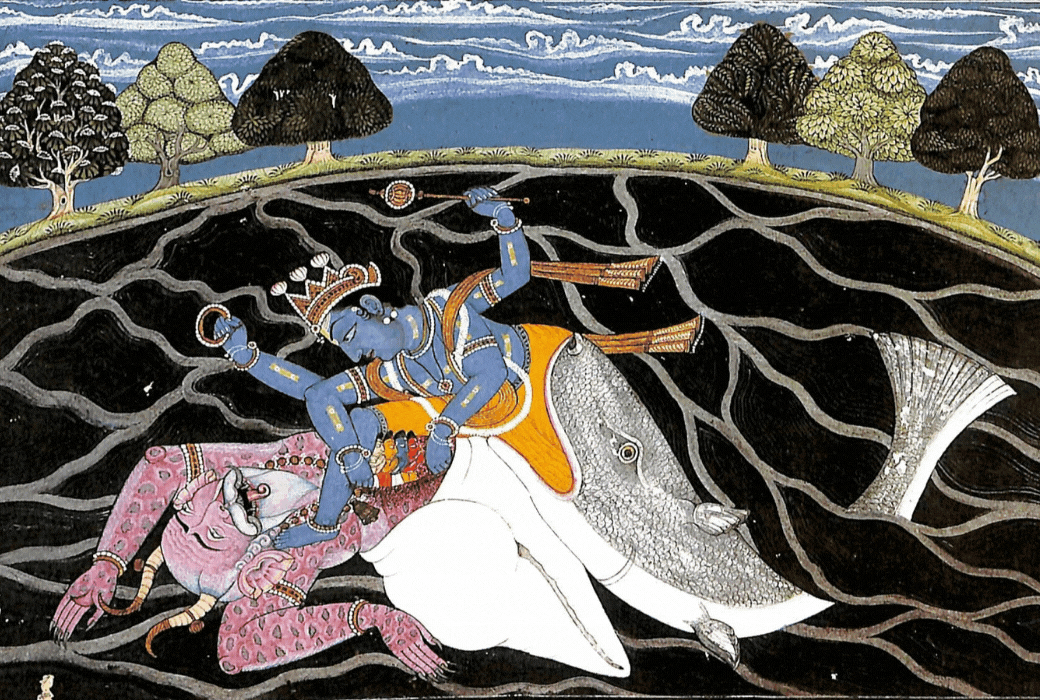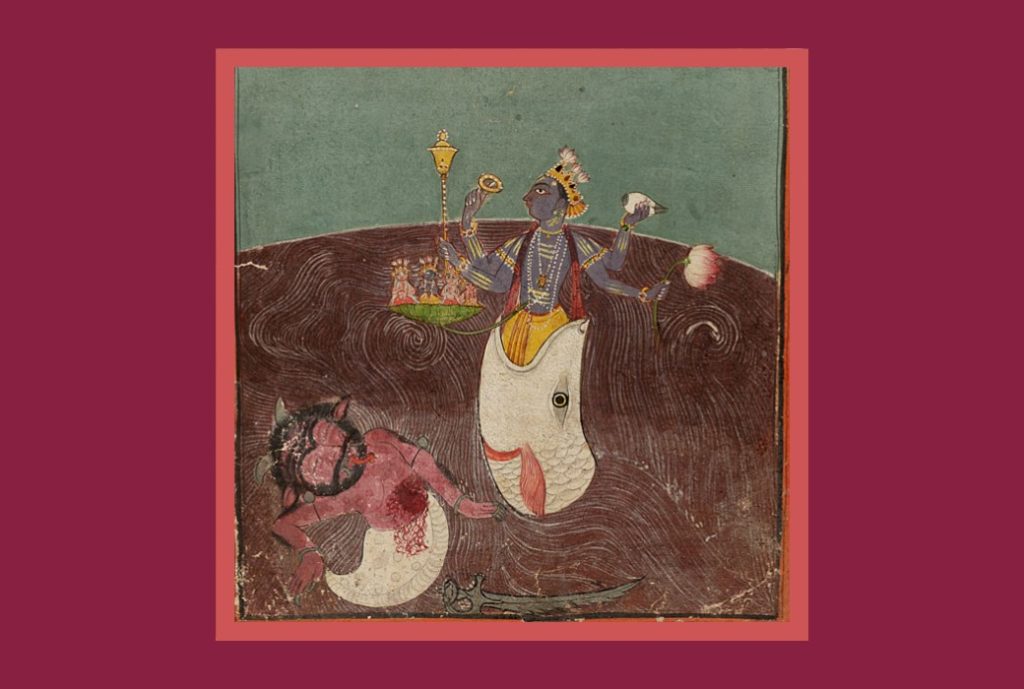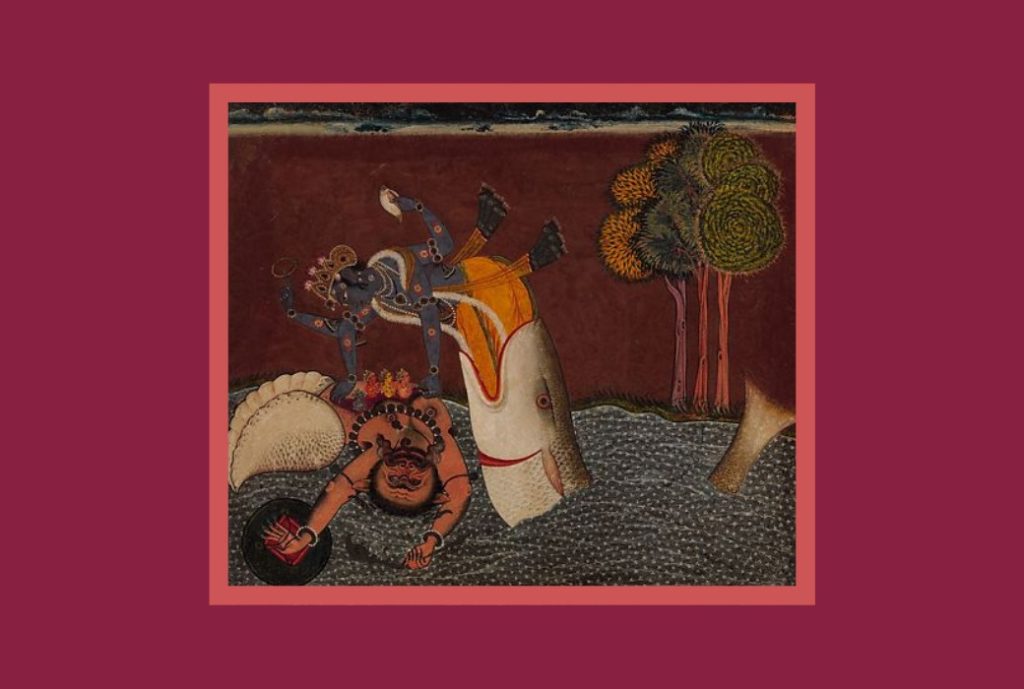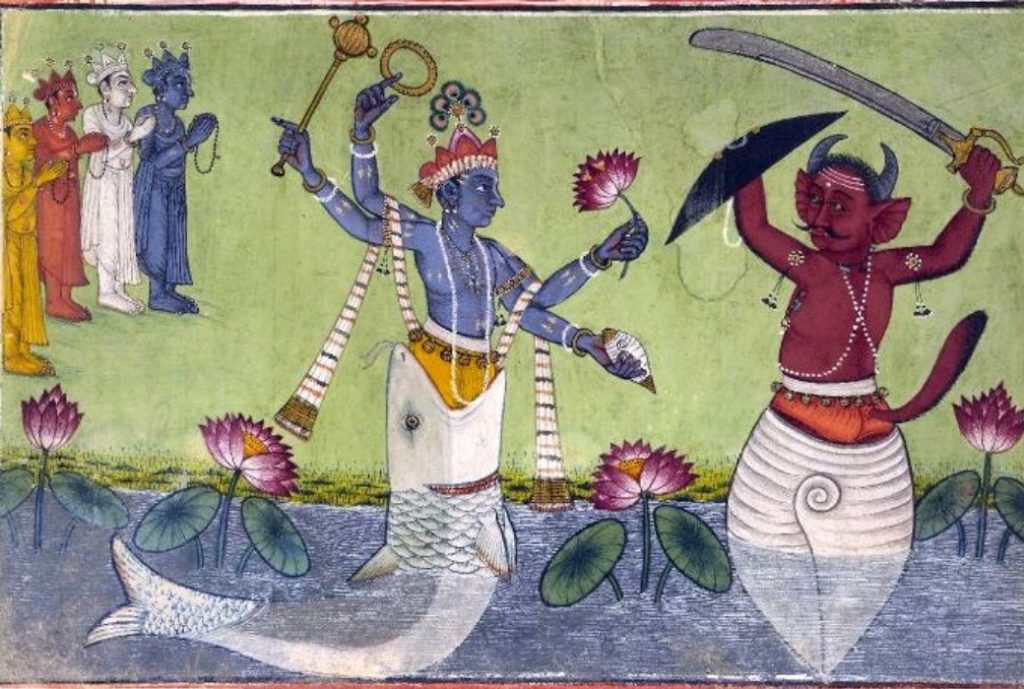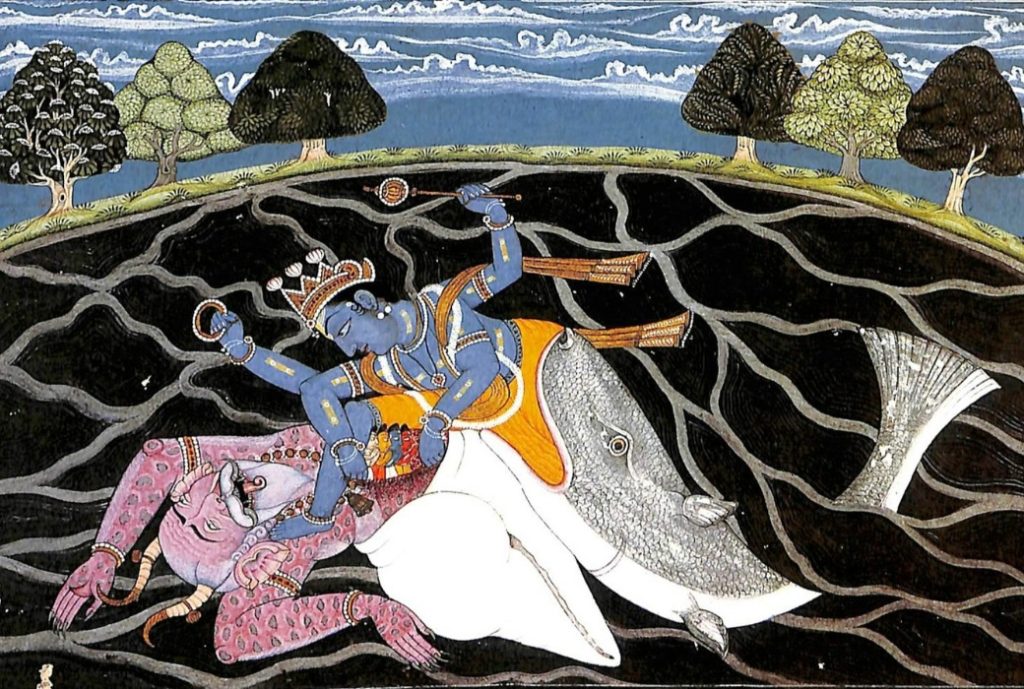With names like Camel or Frog or Tree or Fish, yoga poses often relate to other beings and stories too. As we practice, we can transform into these beings in our imaginations. For instance, when I practice tree pose with my foot firmly against my thigh and my arms raised, even when I’m unstable – swaying – I become the tree. Now I haven’t practiced fish pose in the water yet but would like to see if I can fully embody the primal being that we once were as a fish and maybe with time without water.
I already feel like a fish when I swim or at least my idea of what it’s like to be one. Immersed in water, floating, gliding, moving, and buoyant I feel vibrant and alive. It feels fundamental – essential and basic – stirring in me – feelings of comfort and fluidity. Maybe my ancestral brain kicks in since after all, we did evolve from fish. Maybe that is why I really love this pose? But I don’t like all the heart-opening poses. In fact, some of them make me very uncomfortable. Feeling vulnerable and exposed isn’t always fun.
In this piece we’re not just going to look at a pose and talk about it here, we’re going to dig a bit deeper and look at its origins, the mythology behind it, some beautiful historic artwork related to it, the evolution of vertebrates and whatever other rabbit holes that I jump into on the topic as we open our hearts and explore the pose called Matsyasana. So let’s dive in 🙂
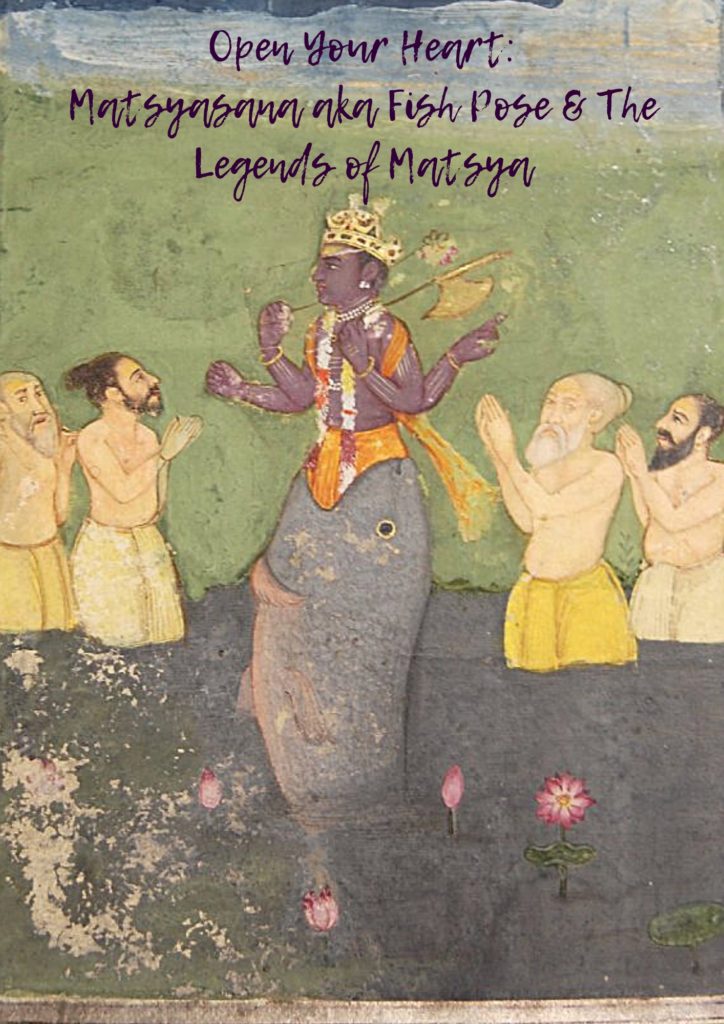
The Name
Matsyasana gets its name from the first avatar of Vishnu, Matsya (fish) + the word asana (pose) = Fish Pose.
The Characters in the Story
Vishnu aka Matsya
Vishnu is one of the most important gods in Hinduism. Vishnu along with Brahma and Shiva form the principal trinity known in Hinduism. According to various texts, he took many forms or embodied many avatars throughout the ages. Some say 10, some say 21 and some say that they are too numerous to count. Ten seems to be the number generally associated with Vishnu. However many times he incarnates on Earth, each time Vishnu must descend to Earth and save and/or recover ancient knowledge or resolve some problem on Earth.
In this story often associated with his first incarnation or first form, he becomes the avatar Matsya. Matsya मत्स्य is the Sanskrit word for fish. This story along with other variations appear in several texts including a section in the Yajur Veda; Shatapatha Brahmana, Book 3, the Vana Parva, in the epic Mahabharata and in at least three Puranas if not more where the names of the characters, the details, the plot and the message diverge. The legends associated with Matsya vary in each text and they don’t always equate Matsya with Vishnu. Even the demon is called by different names in some cases as Hayagriva or Shankhasura.
Manu
Manu is also known as the first man and ancestor of two mythical royal dynasties – solar or son-based, and lunar or daughter-based. He is the ancestral father of the human.
The Story of Matsya
The story begins with Manu a King and legislator. A container of water is brought to him and in that water is a small fish. The fish asks Manu to protect him since he fears being swallowed up by larger fish. In exchange for protection, the fish in exchange, promises to save Manu from an impending flood that will destroy all life on Earth. Manu accepts and keeps the fish safeguarded from other fish. The fish continues to grow to an enormous size as he is safeguarded. Once he is free from the danger he is returned to the ocean.
The fish instructs Manu to build a boat by a specific date. The flood comes and the fish carries the boat with Manu to the high grounds of the northern mountains, the Himalayas. Matsya saves Manu, ancient knowledge and earthly existence. In one version, the fish reveals himself as Lord Vishnu and gives the power of creation to Manu.
But the flood is only one part of the story. In this story, Matsya must also save and restore ancient knowledge by slaying the demon Hayagriva or Shankhasura since the sacred texts had been stolen from heaven buried beneath the primordial sea by the demon. Later, Vishnu emerges from a fish to tear open the demon’s stomach. From the demon’s stomach, four crowned figures are released. Each figure holds one of the Vedas.
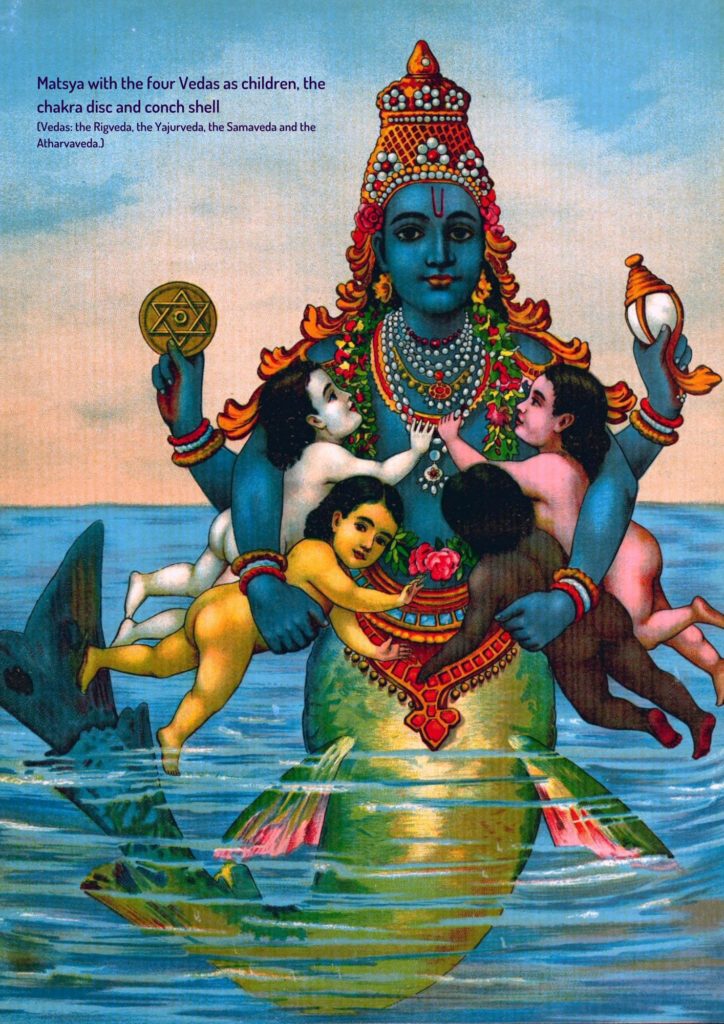
Matsya Embodied
Matsya is either shown as a fish or in a combined human-animal form, with a man as the upper half and the lower half as a fish. He may be shown alone or in combat with the demon.
Often, Matsya is depicted with four hands—one holding a conch shell, one holding the Sudarshana Chakra (more of a weapon but originally as the wheel of time), one hand in the gesture known as the Varada mudra, and one in the Abhaya mudra suggesting protection. Or if the hands are not in the mudras then one is holding a lotus and one holds a club and in some cases, the front two hands could alternately hold a sword and a book signifying the Vedas he recovered from the demon.
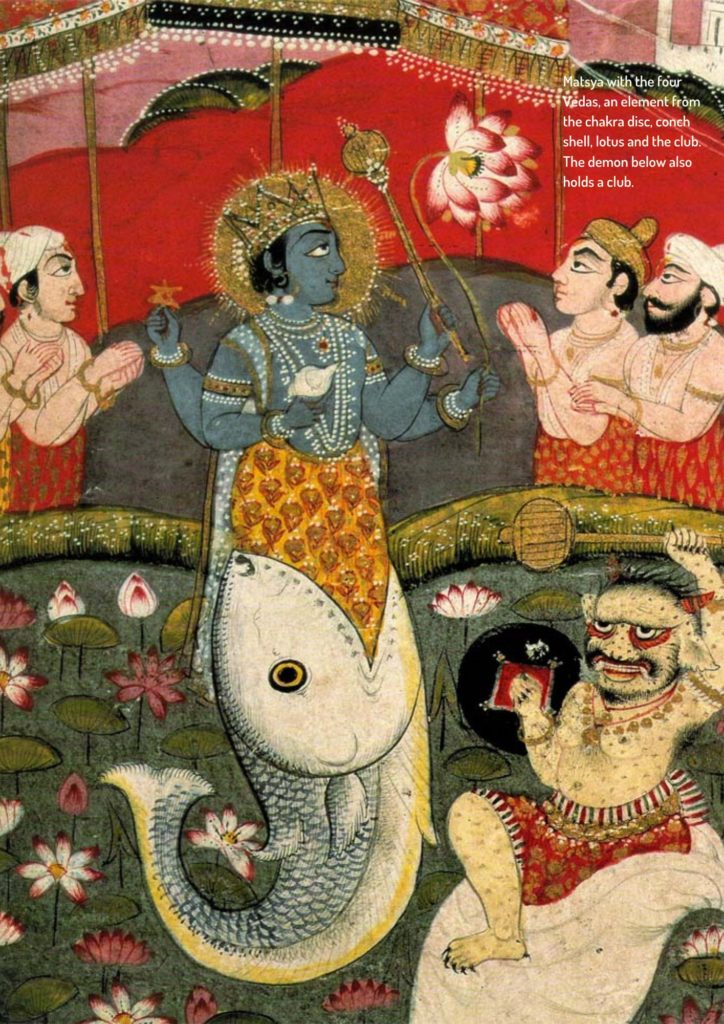
Symbolism
Matsya is believed to symbolize the aquatic life of the first beings on earth. The boat can represent Moksha or the transition from the earthly plane to spiritual planes and the Himalayas where the boat is perched in the end is symbolic of the boundary between the earthly and spiritual planes of existence.
Floods and Deluges Throughout Time
The story of a great deluge is found in civilizations across the earth and throughout time. These include the Genesis narrative of the flood and Noah’s Ark as well as ancient Sumerian texts Atrahasis /Ziusudra/Gilgamesh and Babylonian tales and including tales from Greece, the Maya of the Americas and the Yoruba of Africa. In addition, the fish motif is found in the biblical tales of ‘Jonah and the Whale.’
Matsyasana: Fish Pose How-To
A heart-opening backbend
Practiced in both Hatha Yoga and Ashtanga yoga, it’s a good pose to counterbalance the body following shoulderstand or can be practised before, either way practicing both poses creates balance. There are a few variations to it and I’ll discuss them in the “How To” section and you’ll see them in pictures as my roommate, Sabrina at Yoga Teacher Training was kind enough to demonstrate two variations. The lighting isn’t terrific but it was sufficient to show you the correct way to practice the poses.
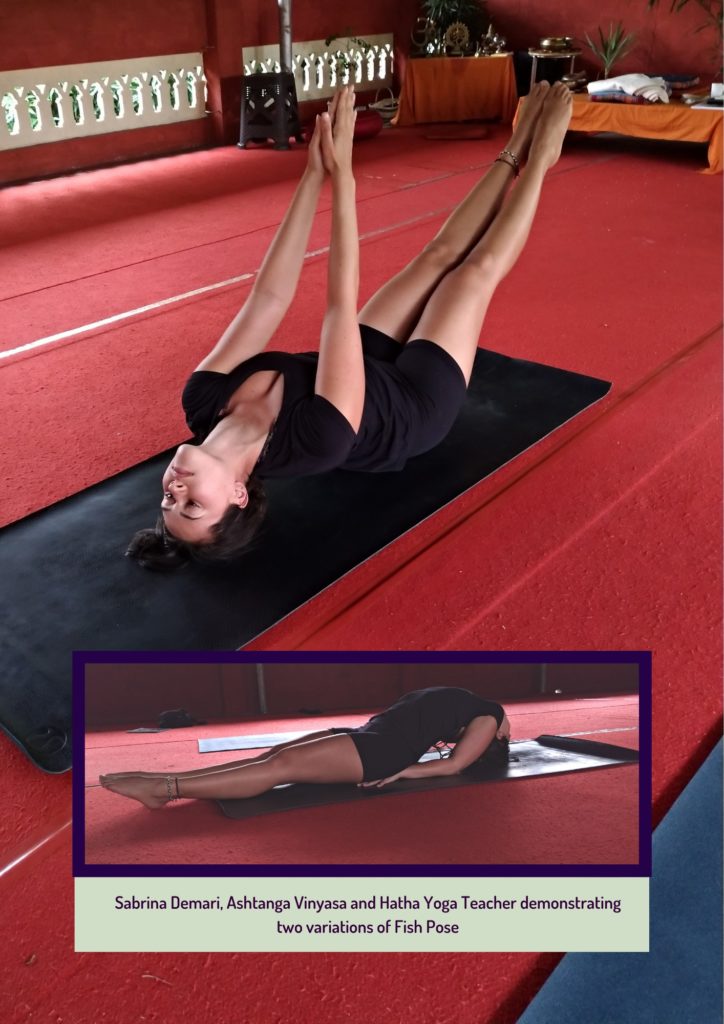
The Fish Pose provides a stretch to the neck and opens up the chest. This is a counterpose that follows shoulder stand opening the chest and as you breathe more deeply with each inhalation, the chest opens up more and more.
Coming into the pose
- Lie on your back. Keeping your legs and feet together if you are doing the common variation with straight legs. You can also practice this pose with knees bent keeping your thighs active.
- Place your hands under your hips, palms facing down.
- Breath in gently lifting and drawing your shoulders back into a backbend as you bring your weight onto your forearms and elbows. Important: no weight should rest on your head.
- Keep your elbows in alignment and close to your body.
- As you open your chest drop your head back and allow the crown of your head to rest on the floor, you might only be able to rest the back of your head depending on your flexion. Do not force your neck to do something it is not yet capable of, be mindful and do what you can. Breathe into the pose expanding your lungs and chest.
Props:
You can also use props. In this pose, you can use a bolster or rolled towel or blanket under the back, and with a cushion under the knees.
Variations:
If you’d like to go further you can challenge yourself either by lifting your straight legs off the ground or you can do the pose with the legs in the lotus position (advanced.) Be mindful of your knees. The hands may be placed in front of the heart in Añjali Mudrā, making the pose more difficult
Benefits of the pose
- Stretches the deep hip flexors (psoas) and the muscles (intercostals) between the ribs thereby strengthening the lungs.
- Stretches and stimulates the organs and muscles of the abdomen and neck
- Strengthens the muscles of the upper back and back of the neck
- Improves posture by stretching the thoracic and lumbar regions of your spine
Coming out of the pose
Exhale as you gently lift and straighten your neck and lower your upper body down to the mat.

Evolution
Here are two videos that are worth your time. One is just over a minute and beautifully illustrates 550 million years of human evolution and the second one is a brief and very informative talk about our origins.
